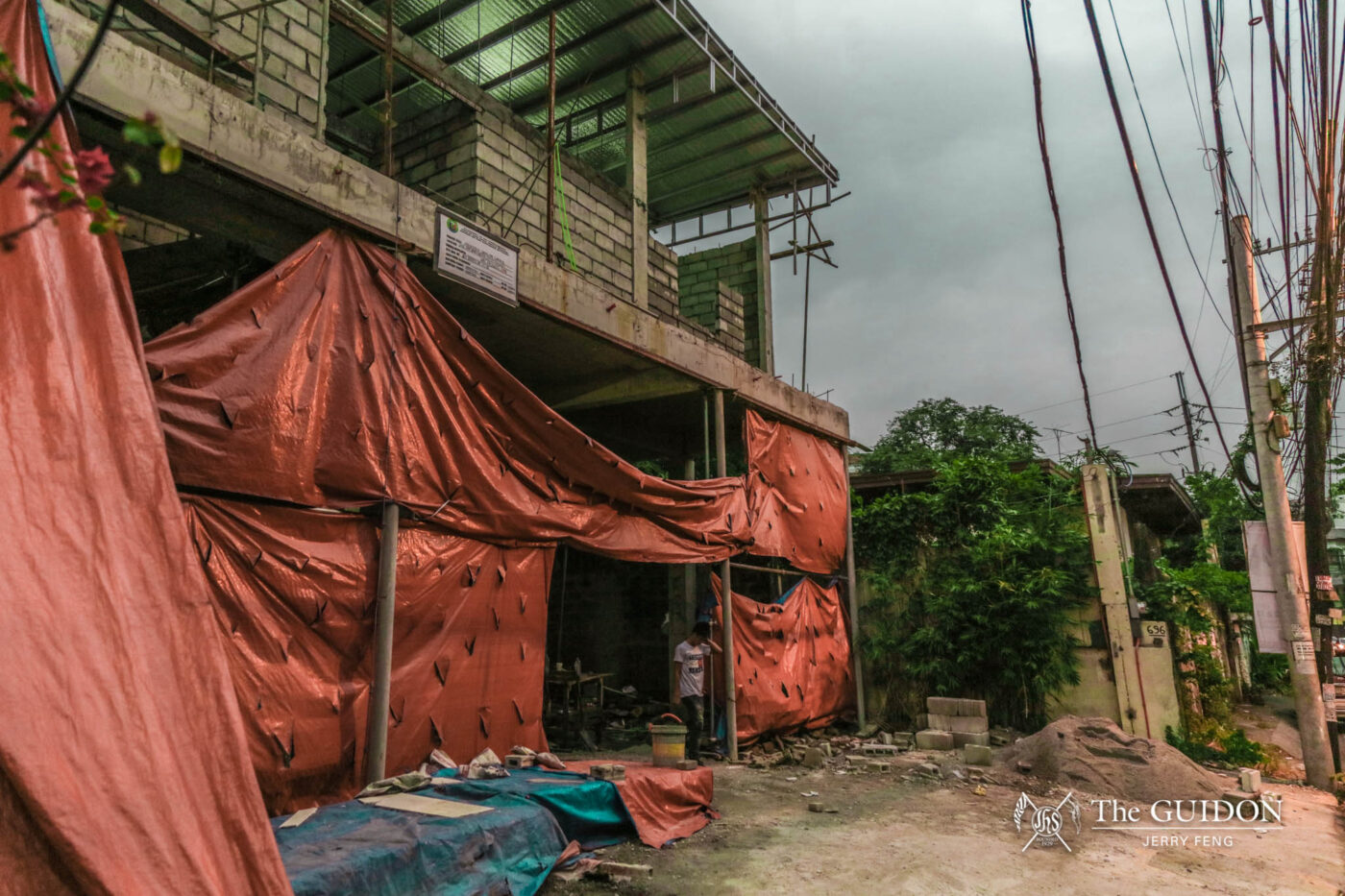The community of Sitio San Roque in Quezon City has not known peace in a long time. Informal settlers in the area have fought for years against government authorities forcing them from their homes, setting up barricades and protesting on the streets whenever a demolition operation is carried out. Special Weapons and Tactics (SWAT) personnel armed with water cannons, and occasionally tear gas, are a common sight for these people who are unafraid to meet them with placards and chanting.
In recent memory, members of the urban poor group Kalipunan ng Damayang Mahihirap (Kadamay) took up their painted signs to protest ongoing demolition efforts of San Roque. Last October 22, they stood outside the office of the National Housing Authority (NHA) located in Quezon City, condemning the agency’s involvement in the commercial building project that has sidelined their rights.
Called the ‘Vertis North’, the large-scale, mixed-use development by property giant Ayala Land was first revealed back in 2012. The complex is part of a broader project to establish the Quezon City Central Business District (QCCBD) and will encompass various residential and commercial properties designed to cultivate economic activity.
Impeding this vision, however, are 256 hectares of land once reserved for socialized housing, and the displacement of thousands who are evicted from their homes.
A ‘world-class’ Manila
Arnisson Andre Ortega, PhD, an assistant professor of the University of the Philippines (UP) Diliman, conducted a study that explained this phenomenon of displacement.
Contrasting data pertaining to zonal values of different areas with measures of informal settler population, Ortega found that areas appreciating in value are also areas where the number of informal households decreases.
Typically, spaces become more valuable as a result of urbanization efforts by real estate developers such as Ayala Land in the case of Vertis North. Bustling hubs of commerce and business attract many with the promise of opportunity and development, thus increasing demand and value.
Ortega’s findings suggest that while these projects drive up zonal value, they also necessitate the eviction of those inhabiting the area. In the North-South Railway Project under the 2011-2016 Philippine Development Plan, more than 100,000 households were targeted for demolition-relocation operations.
Ortega further explains the phenomenon of displacement by looking to the history of the Philippines and claiming that colonialism has “indelibly shaped Manila’s urban space and so does gentrification.” He argued that centuries of colonial policies concerning land, trade labor, agriculture, and migration have impacted modern-day Manila. Through the influence of these colonial policies, Manila’s urban growth structuring investment flows, property transactions, and population mobilities have been affected. This, in turn, led to the privatization of public lands, the displacement of the urban poor, and the rise of urban developments.
Aside from the rippling effect of land values and postcolonial vision for Metro Manila, transnational organizations such as the World Bank and Japan International Cooperation Agency (JICA) indirectly prompts the displacement of urban poor. Through projects like the Metro Manila Greenprint 2030 funded by the World Bank or the Mega Manila Dream Plan of JICA, an increasing number of the urban poor may be asked to leave their homes or face eviction similar to the events that have transpired in Sitio San Roque.
Empty houses, empty promises
Shortly after he was elected, President Rodrigo Duterte swore that under his administration, there will be “no demolition without relocation.” However, this is easier said than done when for decades, gaps in the national housing system have prevented such from happening.
UP economics professor Chester Arcilla highlighted these shortcomings in a research paper, arguing that current housing policies only serve the interests of private contractors at the expense of the Filipino poor.
When the National Housing Authority (NHA) was created in 1975, it was given the mission to “harness and promote private participation in housing ventures.” Alongside the Urban Development and Housing Act of 1992, this mandate of the NHA signified a shift “from a highly centralized and heavily subsidized policy to a market-oriented and participative approach to housing.”
Such a model led to the proliferation of public-private partnerships (PPPs) between the Philippine government and private contractors. Since the latter controls a multitude of resources including knowledge of where to get affordable construction materials, these PPPs allowed housing units to be built at lower costs.
At every development phase in the building process—from site preparation to housing construction—the NHA is responsible for monitoring adherence to set standards, especially since funds are released after every phase. However, it is arguable that these protocols are not being strictly implemented, as some clusters of constructed housing units remain unlivable.
A special documentary entitled “Kalamidad sa Pabahay,” which ran on Failon Ngayon on ABS-CBN in April 2018, revealed a host of features that are common in most resettlement units: cracking walls, road subsidence, vulnerability to flooding, suboptimal cement mixtures, and missing reinforcing steel bars. These indicators of substandard construction—coupled with the fact that housing units are also too far from urban economic centers for residents to carve out sustainable livelihoods—are driving non-occupation, which in turn results in thousands of wasted and empty housing units.
Painting a fuller picture of the situation, Arcilla said that when units remain vacant, taxes are channeled into unused, unsuitable, and wasted housing infrastructures.
“When occupied, the poor beneficiaries pay for any substandard construction and depreciation due to non-occupation,” he wrote in his paper.
As units are still bought at full cost regardless of defects, private contractors maintain a steady flow of profit.




